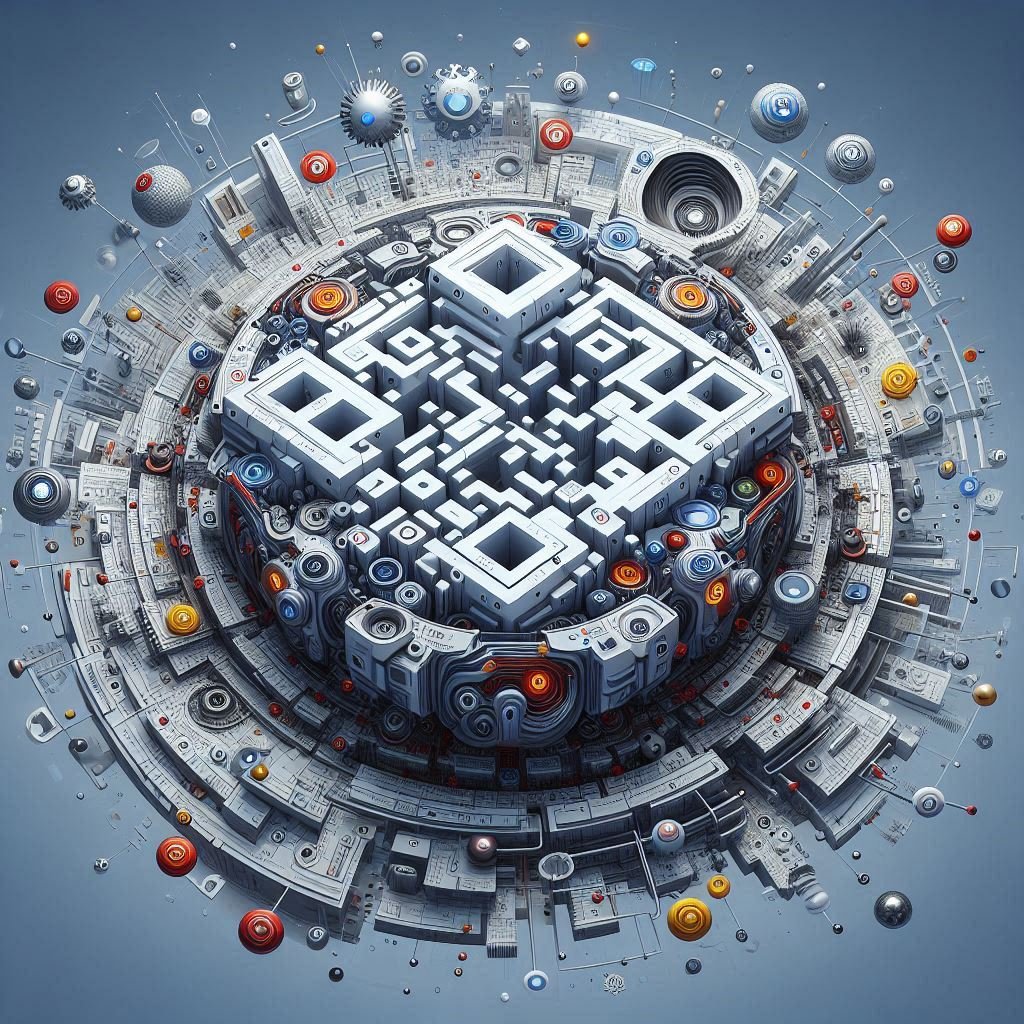Quick response code better known as “QR codes” in its abbreviated form are found from household groceries to banks and other enormous industries. How does this black and white squares store and share data? In this article lets explore the science behind QR codes and their applications in day to day life.
Anatomy of a QR Code
At first glance, QR codes appear irrational, but their structure is neatly organized the 5 five main parts of the anatomy of a QR code are listed down below:
- Finder Patterns: Three identical squares in the corners (top-left, top-right, and bottom-left) act as orientation markers.
- Alignment Patterns: Smaller squares in larger QR codes help scanners adjust for perspective distortions.
- Timing Patterns: A row and column of alternating black-and-white modules create a grid to measure module size.
- Quiet Zone: A mandatory blank border prevents interference from surrounding graphics.
- Data Modules: The remaining black/white squares store encoded information and error correction data.
From Data to Pixels: The Encoding Process
QR codes convert text, URLs, or numbers into binary using four main steps and they are as follows.
- Mode Selection: The encoder chooses a data type (numeric, alphanumeric, binary, or Kanji). For example, “HELLO” uses alphanumeric mode.
- Character Count: A binary prefix specifies the data length (e.g., 5 characters for “HELLO”).
- Data Conversion: Characters are translated into bits. Alphanumeric mode uses a 45-character table (0-9, A-Z, and symbols like “$”), where two characters are packed into 11 bits.
- Error Correction: Using Reed-Solomon codes, redundant data is added. For instance, a “High” error correction level (30% redundancy) allows scans even if parts of the code are damaged.
Lastly the data is interleaved to increase recovery rate by spreading errors in multiple blocks.
Next lets discuss about how QR codes are optimized for readability (making the QR code more easy to scan to any device) Not Every QR code layouts are scanner-friendly. Some patterns—like large solid blocks—confuse scanners. To fix this and optimize the process, the encoder applies one of eight mask patterns (e.g., alternating black/white modules every two rows). The chosen mask minimizes “penalty points” for undesirable visual patterns like squares with the same color next to each other QR codes like this are very inefficient.
How Scanners decode QR codes:
QR codes come in 40 versions. Version 1 (21×21 modules) holds 25 alphanumeric characters, while Version 40 (177×177 modules) stores up to 4,296 characters. Larger codes include alignment patterns to assist scanners. This data can be scanned and decoded by using the below listed steps.
- Detection: The scanner identifies finder patterns to locate the code.
- Perspective Correction: Using alignment and timing patterns, the scanner adjusts for angles or curves.
- Decoding: The scanner reads format data (error correction level and mask) and reconstructs the binary stream.
- Error Recovery: Redundant bits repair missing or corrupted data.
QR codes are a very versatile technology for human kind and by learning the inner working of QR code technology will help you to use QR codes more efficiently and easily. And finally use QR codes cautiously because streamline tasks that uses QR codes like sharing Wi-Fi passwords, processing payments, and tracking inventory. However, their convenience comes with risks. Malicious codes can redirect users to phishing sites. To stay safe, verify the source before scanning.


